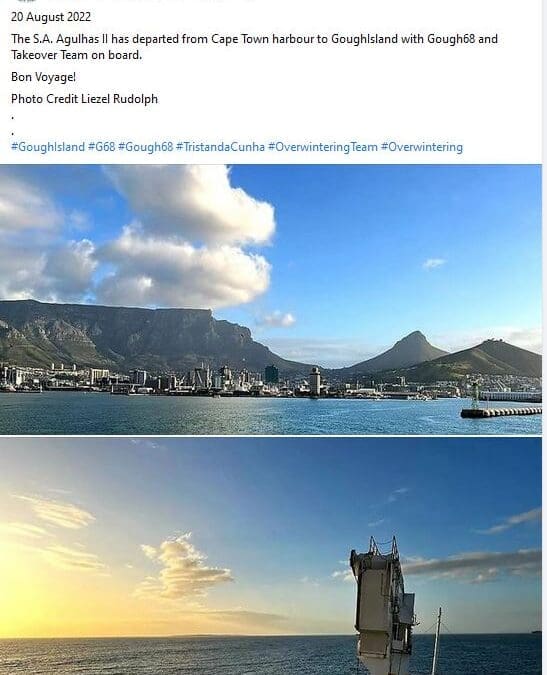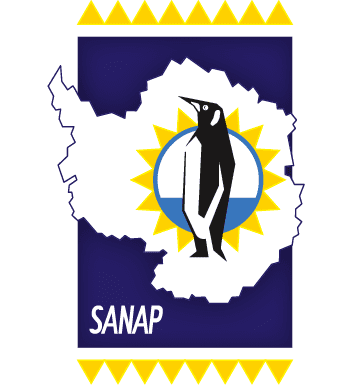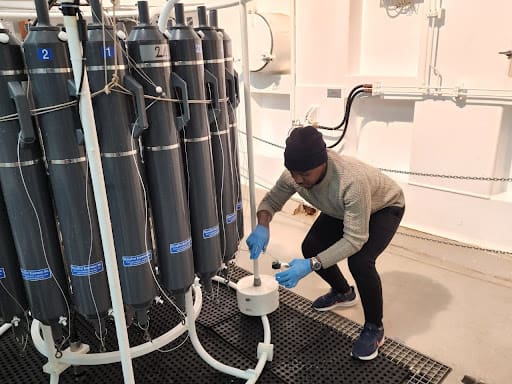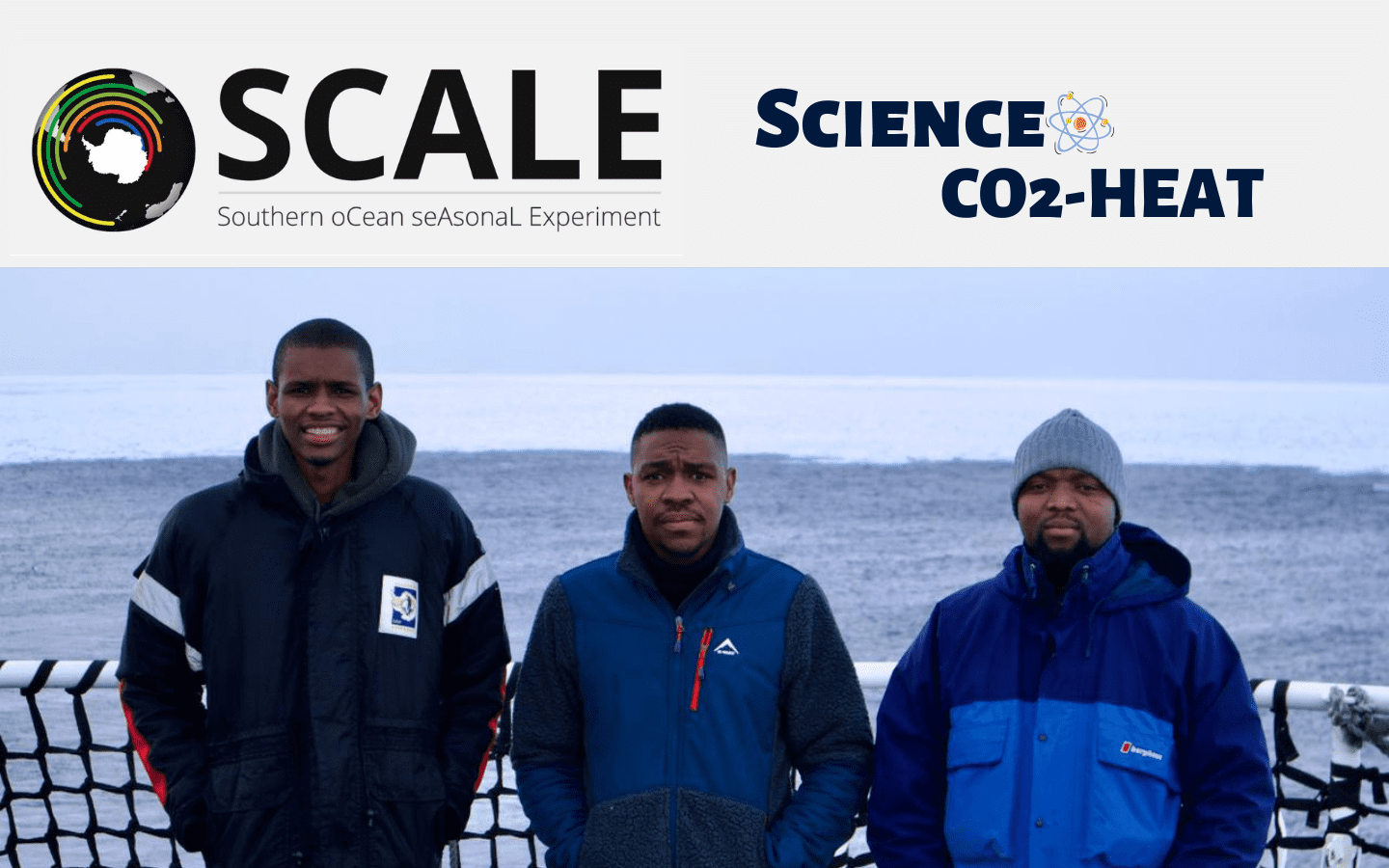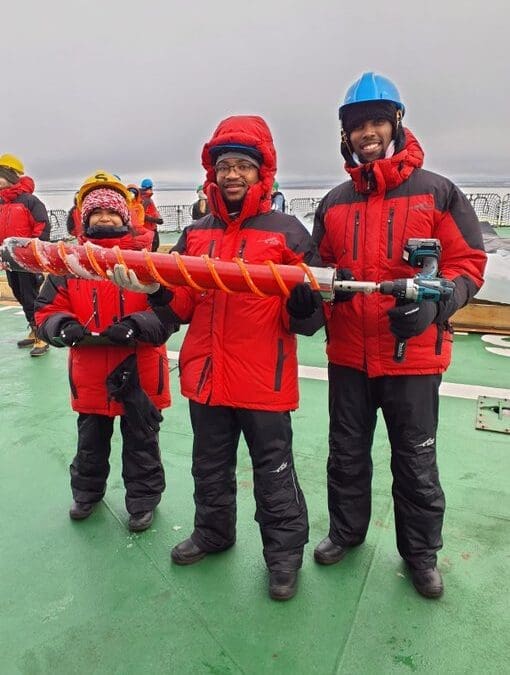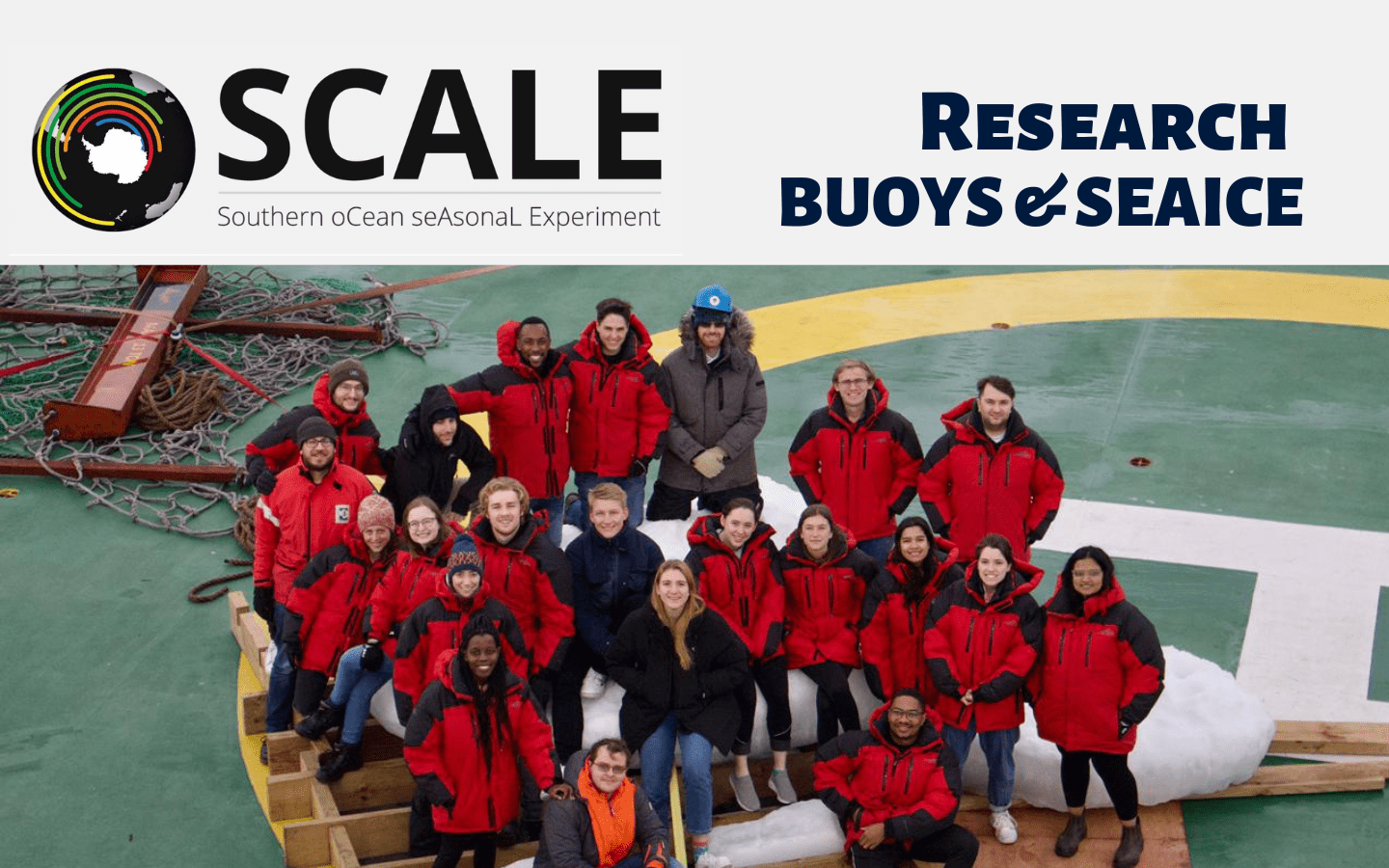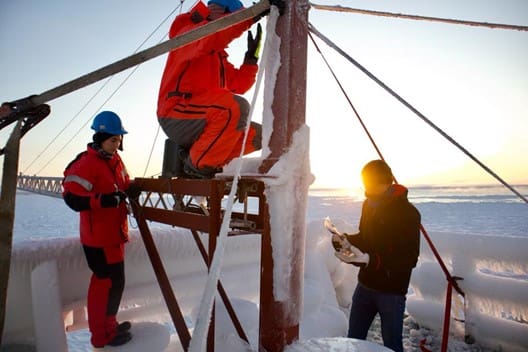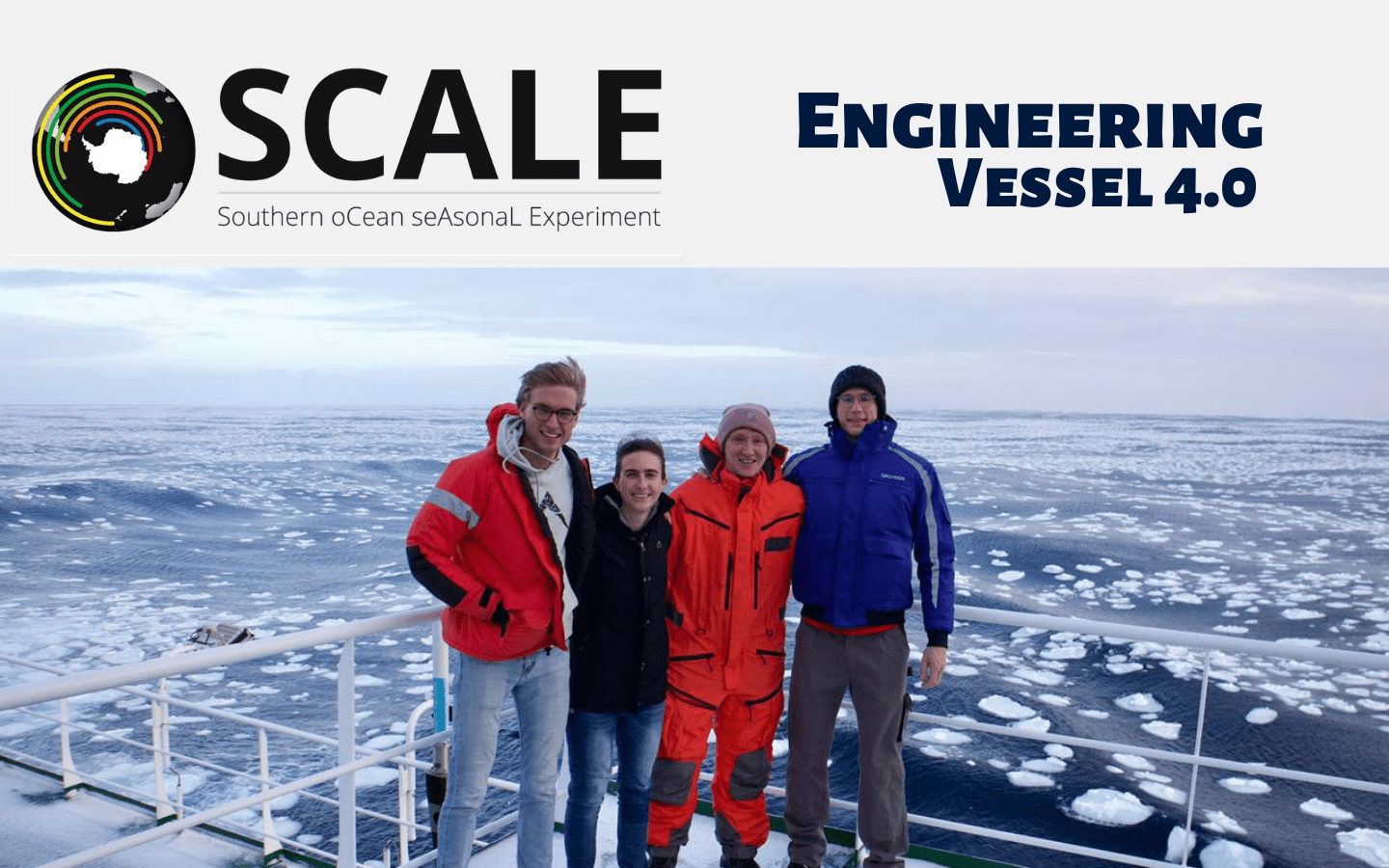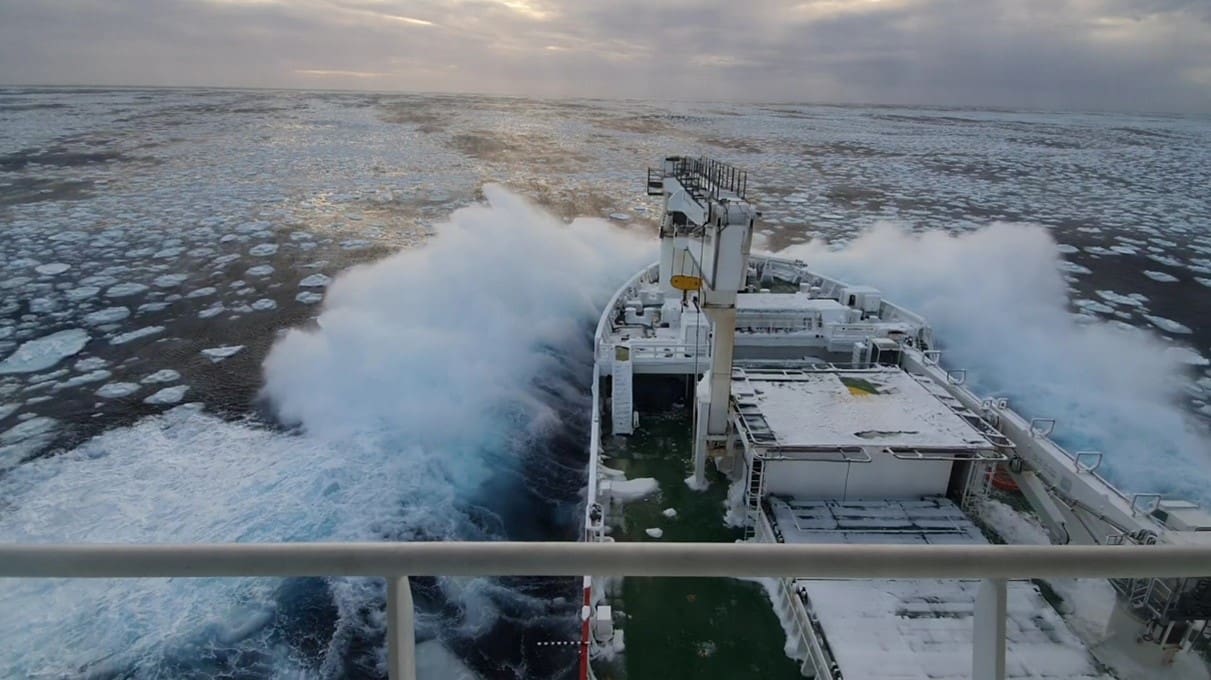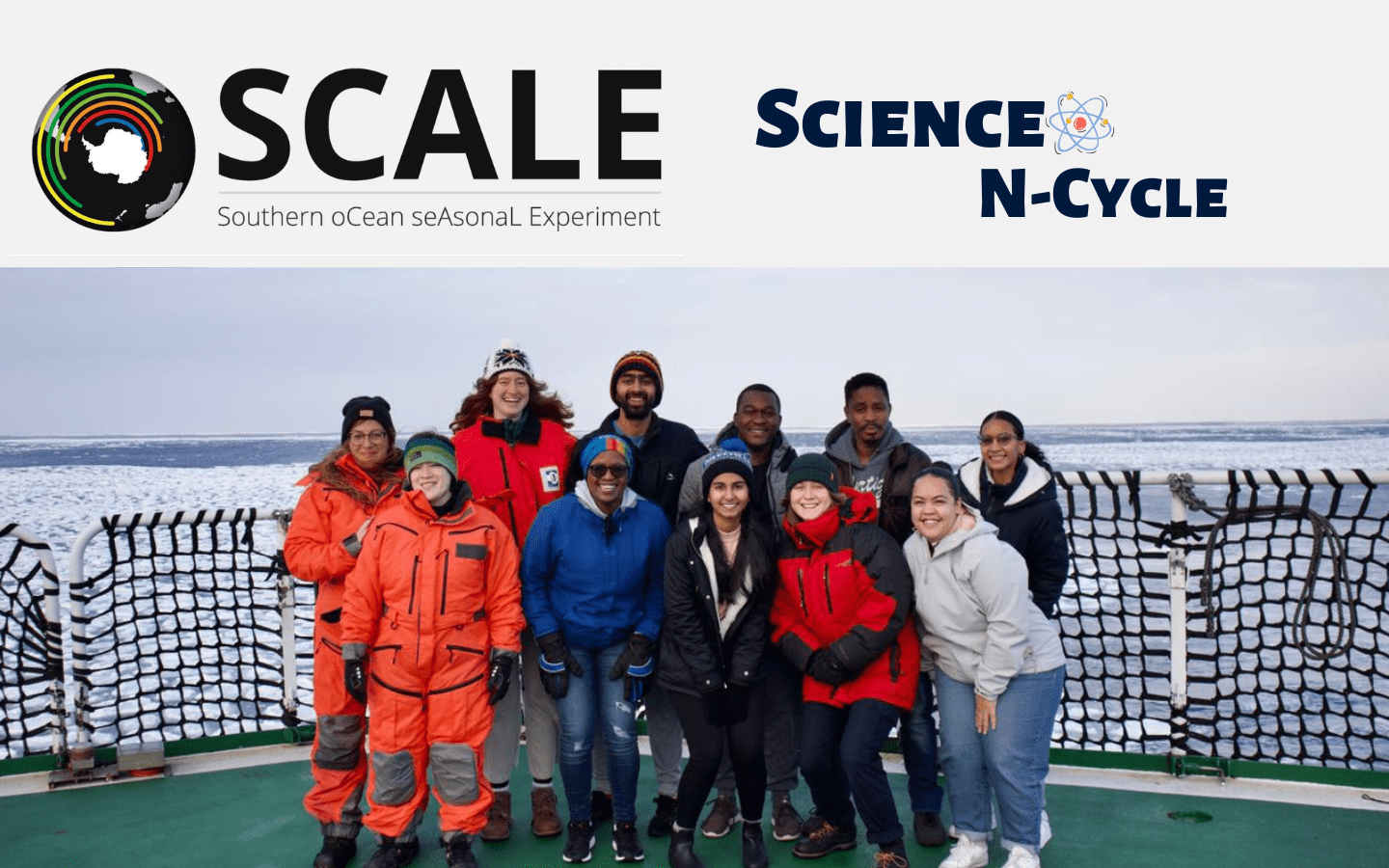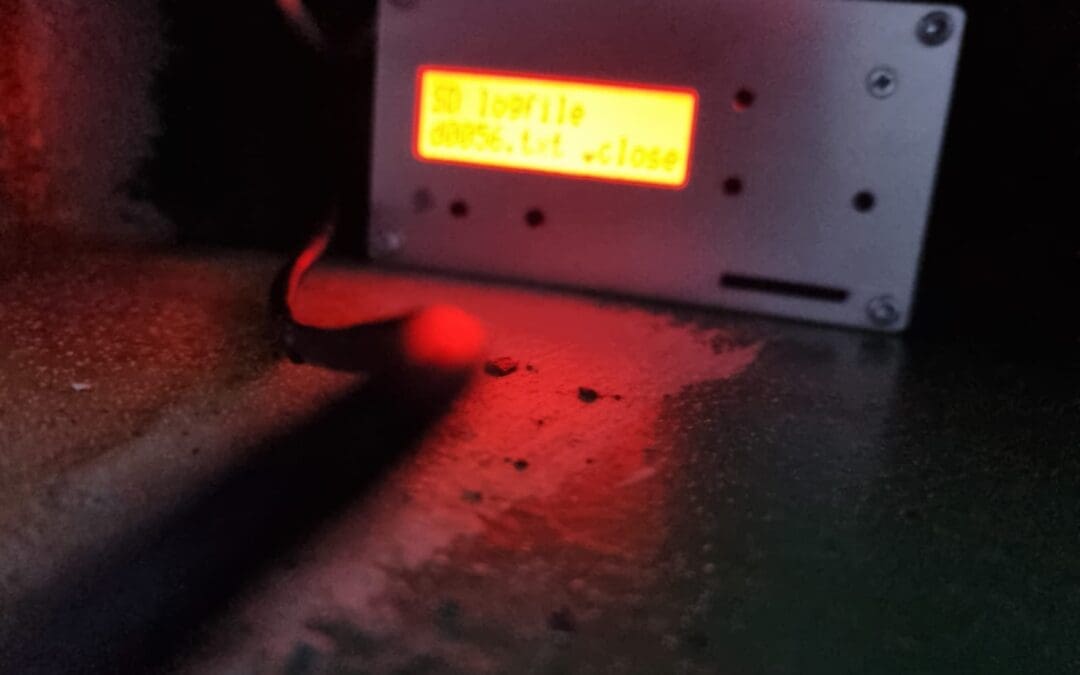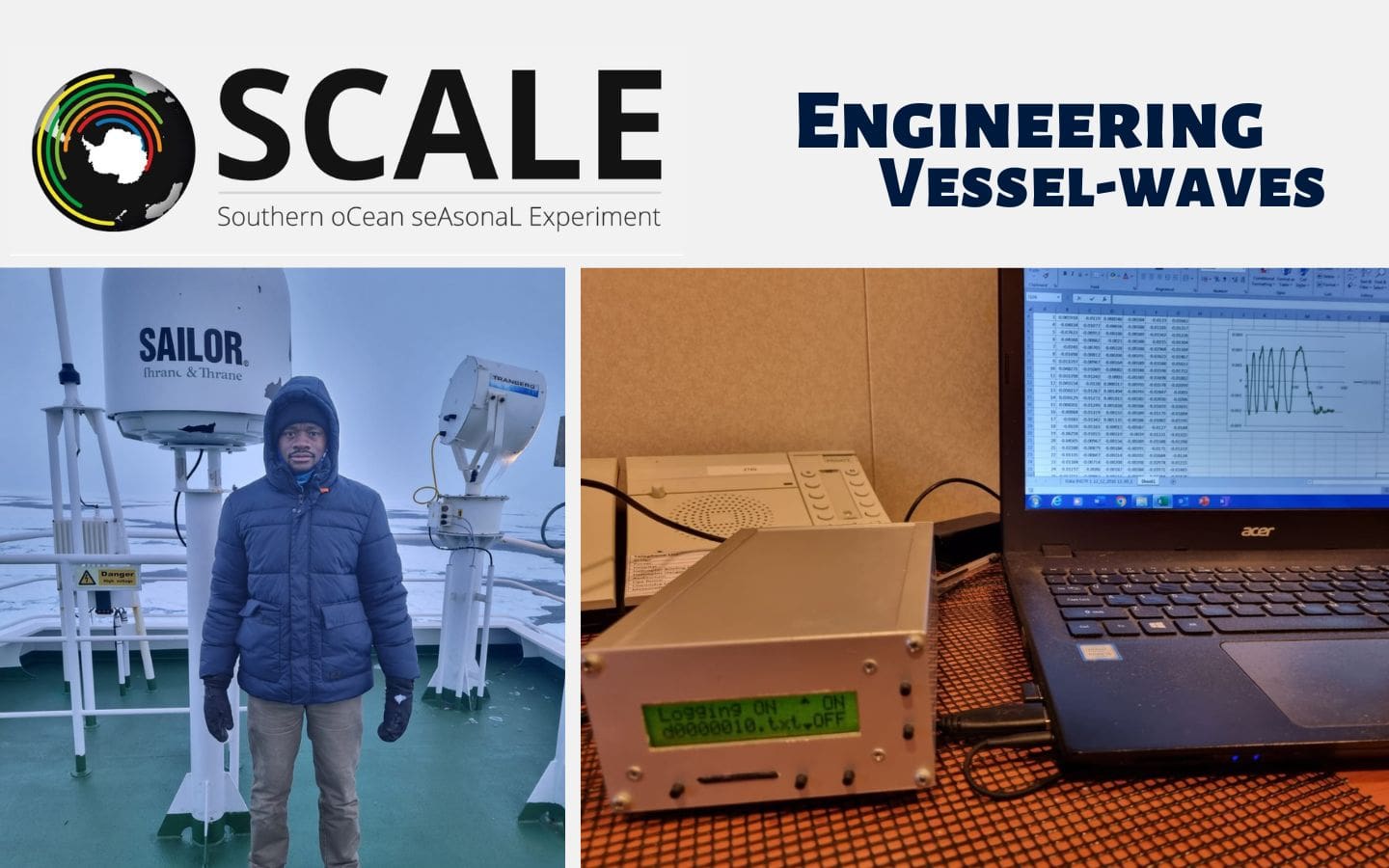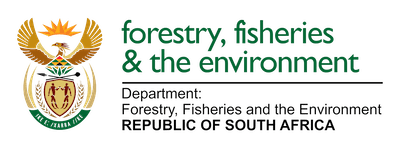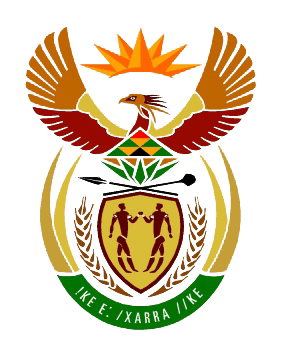
by Ria Olivier | Aug 23, 2022 | Current Event, Gough Island, News, Overwintering Team, SA Agulhas II, SANAP, Science, Southern Ocean, Stations, Take-Over Operations, Tristan da Cunha
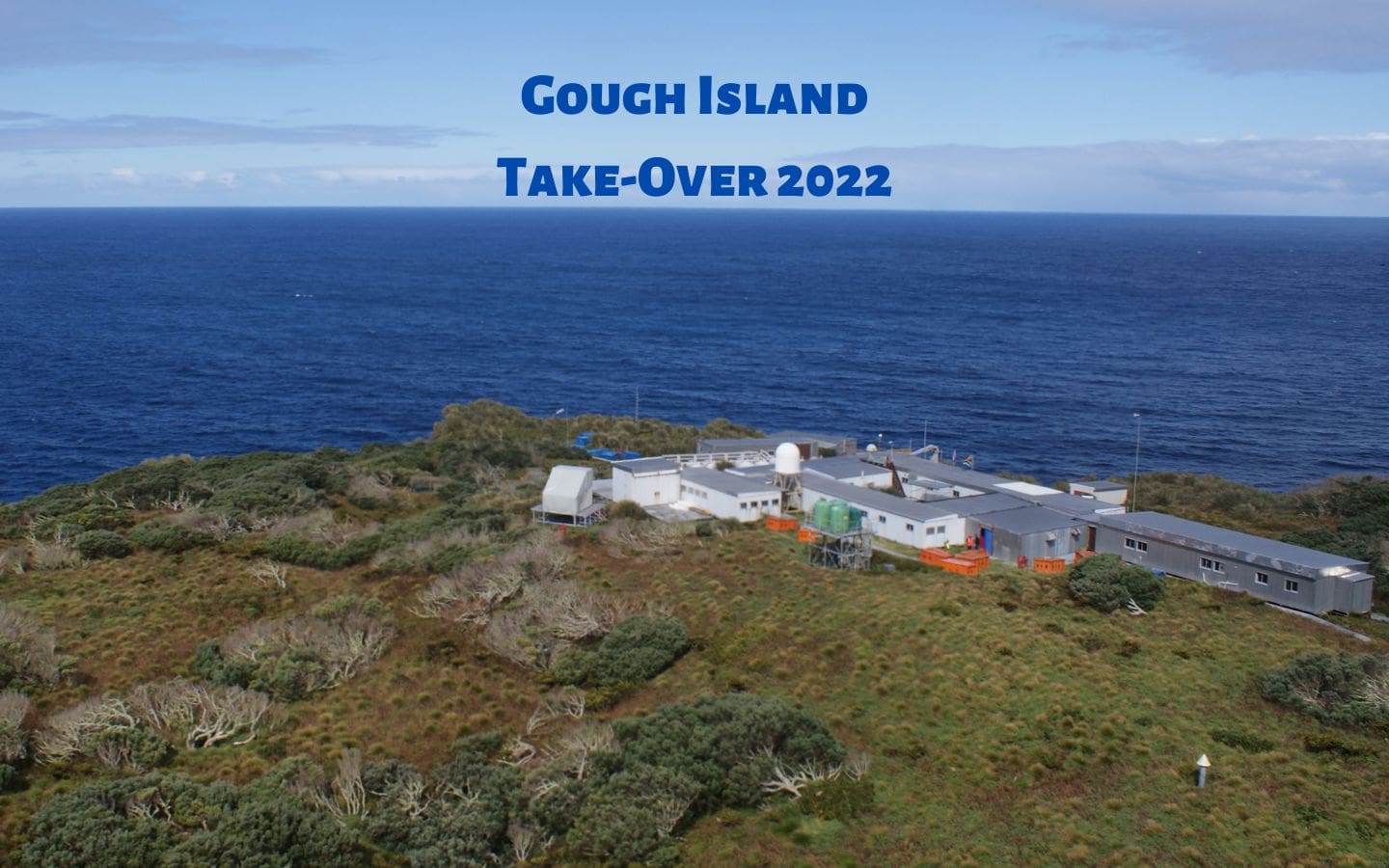
The S.A. Agulhas II departed from East Pier, V&A Waterfront on her annual Gough Island relief voyage on Saturday, 20 August 2022.

On the way to Gough Island, the vessel will stop at Tristan da Cunha, offloading Tristan passengers and cargo. This stopover will approximately be 60 hours. From here the vessel will depart to Gough Island. Passengers will disembark and cargo will be offloaded with helicopters. Scientific projects will commence.
Onboard are the DFFE Logistics team, the 68th Gough Island Overwintering team (9 team members), the National Department of Public Works (NDPW) maintenance team, Helicopter crew, Scientific personnel, and Tristan passengers.
Logistics Team
Department of Forestry Fisheries and the Environment (DFFE)
Directorate: Southern Oceans & Antarctic Support
Management, logistics and support for this voyage |
| Departmental Co-ordinator (DCO) | Ms Nomzi Ndzandzeka |
| Assistant DCO | Mr Zukisa Kuse |
| Technical Section | Mr Willem Boshoff |
| Medical Doctor | Dr MC Taggart |
| Waste Technician | Mr Tatulo Fipaza |
68th Gough Island Overwintering Team (Click here for profile pictures of the team members)
| Medical Orderly/Team Leader | Mr Joyfull Ntobeko Gaju |
| Diesel Mechanic | Mr Sibusiso Maduna |
Communications Engineer/
Deputy Team Leader | Mr Mayembe Kapenda |
| Electrical/Base Engineer | Mr Eddy Mfezeko Xaki |
| Senior Meteorology Technician | Mr Philani Siyabonga Ngcobo |
| Assistant Meteorology Technician | Mr Khuliso Collen Maphaha |
| Assistant Meteorology Technician | Mr Mphumzi Brooklyn Zilindile |
| RSPB Field Assistant | Dr Lucy Dorman |
| RSPB Field Assistant | Ms Rebekah Goodwill |
National Department of Public Works Maintenance Team
| Project Manager Leader | Mr Takalani Mudau |
Refrigeration Mechanical
& Deputy Leader | Mr William E Kriege |
| Carpenter | Mr A Petersen |
| Carpenter | Mr E Roberts |
| Carpenter | Mr ME Gazi |
| Bricklayer | Mr MI Jantjies |
| Plumber | Mr M Maluka |
| Plumber | Mr MW Samsodien |
| Plumber | Ms N Sogoni |
| Painter | Ms B Nelani |
| Crane Technician | Mr James Page |
| Crane Technician | Mr L Pierce |
| Mechanical | Mr J Zeelie |
| Mechanical | Mr MLG Porta Nova |
| Mechanical | Mr B Mpengesi |
| Mechanical | Mr LN Thomas |
Helicopter Crew
| Team Leader & Engineer | Mr Raymond van der Watt |
| Captain | Mr Waldo Venter |
| Captain | Mr Eugene Viljoen |
| First Officer | Mr Mukapitendwa Khalushi |
| First Officer | Mr Jason Abrey |
| Engineer | Mr Daniel Carstens |
Engineer Engine/
HLO/Crewman | Mr Warren Vogt |
| EngineerCrewman | Mr Eduan Teich |
| EngineerCrewman | Mr Jodi Brophy |
| Fire Fighter | Mr Zakariah Johnson |
Scientific fieldwork planned for the 2022 take-over
| South African Weather Service (SAWS) |
| Atmosphere and Ocean Surface Research |
| Group Leader | Mr. Julian Grace |
|
| Department of Forestry, Fisheries and the Environment (DFFE) |
| Monitor trends and changes in water quality, provide guidance and support |
| Group Leader | Ms Silindokuhle Ndlela |
|
| Royal Society for the Protection of Birds (RSPB) |
| Gough Island Restoration Programme |
| Group Leader | Dr Antjie Steinfurth |
|
| South African National Space Agency (SANSA) |
| Polar Space Weather Studies |
| Group Leader | Mr Christopher Gray |
|
| University of Fort Hare |
| Landscape and climate interactions (LCI) |
| Group Leader | Dr Elizabeth Rudolph |
Featured Image: Gough Island station (Credit: Julius Klette).
Anche Louw, Antarctic Legacy of South Africa, 23 August 2022

by Ria Olivier | Jul 29, 2022 | Antarctica, Current Event, Research, SA Agulhas II, SANAP, Science, Southern Ocean, sub-Antarctic
A CSIR-SOCCO – DFFE-Oceans & Coasts partnership

Team CO2-HEAT (L-R): Bubele Rasmeni, Siyabulela Hamnca and Baxolele Mdokwana.
| TEAM | CO2-HEAT |
| Project Name | Contemporary and Future Drivers of CO2 and Heat in the Southern Ocean |
| Principal Investigator | Sarah Nicholson | Council for Scientific and Industrial Research (CSIR) |
| Co-Principal Investigator | Pedro Monteiro | Council for Scientific and Industrial Research |
| Co-Principal Investigator | Sebastiaan Swart | University of Gothenburg |
Onboard CO2-HEAT team members:
| Team Member | Role | Affiliation |
| Siyabulela Hamnca | Onboard Team Leader | Council for Scientific and Industrial Research |
| Baxolele Mdokwana | Technician | Department of Forestry, Fisheries and the Environment (DFFE) |
| Bubele Rasmeni | Technician | Department of Forestry, Fisheries and the Environment |
Contemporary and Future Drivers of CO2 and Heat in the Southern Ocean
The contemporary Southern Ocean mitigates the effects of anthropogenic climate change through its disproportional uptake of carbon and heat. However, it is not well understood how this role will evolve under different emission and mitigation scenarios. The Southern Ocean also remains the largest source of global ocean uncertainty in the global estimates of CO2 and heat fluxes. While much has been achieved globally and regionally in constraining the variability and some of the mechanisms that drive Southern Ocean CO2 and heat fluxes separately, we propose that a significant part of the challenge lies in the lack of research on CO2 and heat together to better understand the feedback and the mechanisms that drive those feedbacks.
This SANAP-NRF project aims to examine the changing role of the Southern Ocean in global climate by looking at the two main drivers CO2 and heat, in an integrated way using an unprecedented 10-year high resolution glider dataset from the 2012-2022 SOSCEx experiments, prognostic biogeochemical models, and new observational experiments planned in partnership with CSIR and DFFE as well as the SO-CHIC EU H2020 project. This collaboration is undertaken as part of the emerging National Ocean CO2 Facility, a research infrastructure integration between CSIR and DFFE within SAPRI and hosted at DFFE.
We aim to gain a better understanding of how the interaction of atmospheric synoptic cycles (storms) and fine-scale (0.1-100 km) ocean processes influence seasonal-decadal variability of CO2 and heat fluxes. This will include the extent to which they feedback on each other and ultimately contribute to a better understanding of the role of the Southern Ocean in the global carbon-climate system.
The expected three outcomes are:
- Improved observational constraints for the contemporary seasonal-interannual variability of CO2 and heat fluxes.
- Understanding of how storms and their interaction with fine-scale dynamics influence the seasonal and interannual variability of CO2 and heat fluxes.
- Identify the potential mechanisms that could explain the decadal anomaly in CO2 fluxes at the end of the 20th century.
Winter cruise sampling:
The SCALE Winter-2022 cruise provides an important opportunity to address a key source of uncertainty in annual Southern Ocean CO2 and heat observations – the dearth of winter time observations. While the lack of winter observations has been improved by the recent proliferation of SOCCOM floats, ship-based observations remain highly valuable as an independent and direct measurement of CO2 and importantly include heat flux observations. On the SCALE Winter-2022 cruise, the CO2-Heat team will be sampling profiles of dissolved inorganic carbon (DIC) and Total Alkalinity. The underway pCO2 system will also be operated during the cruise. Simultaneously, the heat flux sensors are in continuous operation measuring the short and long-wave radiation on minute time-scales. In addition, as part of SO-CHIC, two Saildrones will overlap with the ship sampling path for calibration of measured CO2 and heat flux. The Saildrones will remain in the Southern Ocean sampling heat and CO2 fluxes for the remainder of winter. These key winter observations will be contrasted to the previous summer observations made during the dedicated SO-CHIC cruise in January 2022.

Dr Siyabulela Hamnca in action during SCALE-WIN22.

For more information visit:
Text supplied by Sarah Nicholson (PI).
Featured image supplied by Kurt Martin (SAPRI trainee).
Anche Louw, Antarctic Legacy of South Africa, 29 July 2022.

by Ria Olivier | Jul 29, 2022 | Antarctica, Current Event, Research, SA Agulhas II, SA Polar Research Infrastructure, SANAP, Science, Southern Ocean, STEM

Team Buoys, team SEAICE and the logistics personnel involved in ocean operations.
| TEAM | BUOYS |
| Project name | A network of autonomous sea ice observation platforms in support of Southern Hemisphere climate predictions |
| Principal Investigator & Onboard Team Leader | Robyn Verrinder | University of Cape Town, Marine and Antarctic Research centre for Innovation and Sustainability (UCT-MARIS)
|
| Principal Investigator & ship based Chief Scientists of SCALE-WIN22 | Marcello Vichi | University of Cape Town, Marine and Antarctic Research centre for Innovation and Sustainability (UCT-MARIS)
|
| TEAM | SEAICE |
| Project name | Mechanical and biogeochemical properties of sea ice. |
| Principal Investigator | Tokoloho Rampai | University of Cape Town, Marine and Antarctic Research centre for Innovation and Sustainability (UCT-MARIS)
|
| Principal Investigator | Marcello Vichi | University of Cape Town, Marine and Antarctic Research centre for Innovation and Sustainability (UCT-MARIS)
|
Onboard BUOYS team members:
| Team Member | Role | Affiliation |
| Robyn Verrinder | Onboard Team Leader | University of Cape Town |
| Michael Noyce | MSc | University of Cape Town |
| Agoritsa Spirakis | MSc | University of Cape Town |
| Lawrence Stanton | MSc | University of Cape Town |
| Justin Pead | Senior Tech Officer | University of Cape Town |
| Ippolita Tersigni | PhD | University of Melbourne (Australia) |
| Giulio Passerotti | PhD | University of Melbourne (Australia) |
| Jacques Welgemoed | PhD | Nelson Mandela University |
| Francesca de Santi | Research fellow | University of Cape Town |
| Jan-Victor Björkqvist | Researcher | Finnish Meteorological Institute (Finland) |
| Alberto Alberello | Senior Research Associate | University of East Anglia (U.K) |
Onboard SEAICE team members:
| Team Member | Role | Affiliation |
| Siobhan Johnson | Onboard Team Leader | University of Cape Town |
| Felix Paul | Technician/PhD | University of Cape Town
University of Duisburg-Essen (Germany) |
| Safiyyah Moos | PhD | University of Cape Town |
Tamuka Keche
| MSc | University of Cape Town |
Hayley Swait
| MSc | University of Cape Town |
Magata Mangatane
| PhD | University of Cape Town |
Lisa Kumadiro
| MSc | University of Cape Town |
Dayna Collins
| Honours | University of Cape Town |
Onboard ocean operations logistics team:
| Team Member | Role | Affiliation
|
| Riesna R. Audh | Ice operations | University of Cape Town |
| Jonathan Rogerson | Ocean operations | University of Cape Town |
| Ashleigh Womack | Sea ice operations | University of Cape Town |
BUOYS: More about the project and the team:
A variety of synoptic, seasonal and interannual drivers influence the forms, types and concentration of sea ice in the Marginal Ice Zone (MIZ) in the Southern Ocean. The temporal and spatial distribution of the ice and its physical, mechanical and biological properties are directly related to the natural variability of the oceans and atmosphere, but also anthropogenic climate change. Climate and Earth System Models have limited sea ice variable parameterisations due to the scarcity of spatially distributed high resolution measurements from the region, specifically during winter/spring. To better understand atmosphere-ice-ocean MIZ processes and to improve future prediction of seasonal sea ice coverage and extent, three main approaches are available: (1) in situ measurements, (2) area-wide satellite data, and (3) numerical and experimental modelling. The meaningful connection of these is essential for enhancing understanding of this region.
Improved use of technology and autonomous devices, capable of persistent in situ sampling at finer spatial resolutions over the winter/spring seasons in the Antarctic MIZ, are key to obtaining the datasets needed to improve Earth System Models and to validate remote-sensing products. This requires a multidisciplinary approach including engineering, oceanography and climate science. The #SCALEwin22 expedition BUOY team comprises researchers and students from several institutes including the University of Cape Town (Robyn, Michael, Justin, Lawrence, Agoritsa and Francesca), Nelson Mandela University (Jacques), University of Melbourne (Guilio and Ippolita), University of East Anglia (Alberto) and the Finnish Meteorological Institute – FMI (Jan-Victor). During the expedition we aim to collect high-frequency wave and ice drift data using ice-tethered buoys (see images below) designed and built by the UCT team as well as open water buoys developed by Tallinn University of Technology and WiseParker OÜ. These measurements will be complimented by advanced ship-based imaging of ice floes and waves using LiDAR, stereo and thermal cameras. These unique high resolution data sets will be used to better characterise wave drivers of sea ice formation during winter and to inform Southern Hemisphere climate predictability.
SEAICE: More about the project
Analysis of structural, textural, and mechanical properties of sea ice in the Antarctic marginal zone.

Read more about the SEAICE team’s research here: UCT-MARiS
Check them out on Social Media:
Fearued Image: (Back) L-R: Jan-Victor Björkqvist (BUOYS), Giulio Passerotti (BUOYS), Alberto Alberello (BUOYS), Magata Mangatane (SEAICE), Robyn Verrinder (BUOYS), Justin Pead (BUOYS), Lawrence Stanton (BUOYS), Jacques Welgemoed (BUOYS); (middle) Francesca de Santi (BUOYS), Agoritsa Spirakis (BUOYS), Ippolita Tersigni (BUOYS), Michael Noyce (BUOYS), Felix Paul (SEAICE), Siobhan Johnson (SEAICE), Hayley Swait (SEAICE), Ashleigh Womack (Sea ice operations – logistics), Safiyyah Moos (SEAICE), Dayna Collins (SEAICE), Riesna Audh (ice operations – logistics); (front) Lisa Kumadiro (SEAICE), Jonathan Rogerson (ocean operations – logistics) and Tamuka Keche (SEAICE). Image Credit: Kurt Martin.
Images by Robyn Verrinder, Agoritsa Spirakis, Alberto Alberello and Kurt Martin (SAPRI trainee).
Buoys team text by Robyn Verrinder, Principal Investigator and onboard team leader.
Anche Louw, Antarctic Legacy of South Africa, 29 July 2022.

by Ria Olivier | Jul 27, 2022 | Antarctica, Current Event, Engineering, Research, SA Agulhas II, SANAP, Science, Southern Ocean, STEM

Vessel 4.0 team photo in marginal ice zone. In the photo (left to right): Christof van Zijl, Nicole Taylor, Marek Muchow and Markus Gilges.
| TEAM | VESSEL 4.0 |
| Project name | The Digital SA Agulhas II – Flagship for Vessel 4.0 |
| Principal Investigator | Annie Bekker | Stellenbosch University |
Onboard team members:
| Team Member | Role | Affiliation |
| Nicole Taylor | PhD
Onboard Team Leader | Stellenbosch University |
| Marek Muchow | PhD | Aalto University (Finland) |
| Christof van Zijl | PhD | Stellenbosch University |
| Markus Gilges | PhD | RWTH Aachen University (Germany) |
More about the team and the project:
Nicole and Christof of the Sound and Vibration Research Group of Stellenbosch University, in collaboration with Markus of the HealthProp consortium and Marek of Aalto University, comprise the Vessel 4.0 team. The aim of Team Vessel 4.0 is to investigate the responses of the S.A. Agulhas II as she travels through open water and sea ice during SCALE Winter Cruise 2022.
The S.A. Agulhas II is instrumented with a multitude of sensors, like accelerometers and strain gauges. These sensors function like an internal nervous system, enabling the Vessel 4.0 team to “sense” each vibration and motion of the ship as she breaks through waves and sea ice. So far, the S.A. Agulhas II has had to endure repeated “belly-flops” as she slams into incoming waves (see image below), as well as noteworthy rolling and pitching motions as she climbs and descends large swells on her journey through the Southern Ocean.

The S.A. Agulhas II in a bow slam while in the marginal ice zone (MIZ). Photo Credit: Nicole Taylor.
The team is particularly interested in studying the loads that the ice and waves cause to the hull and propulsion system of the ship. They perform engineering analyses of measurements from the hull and propulsion system to understand how intensively the Southern Ocean and its sea ice require the S.A. Agulhas II to work while navigating through winter conditions. In the image below (left), Markus is shown monitoring his measurement system located in the shaft line.
Additionally, the team is performing visual observations of the sea and ice state around the S.A. Agulhas II throughout the time of the cruise. It helps to record details about the environment that the ship encounters so that the team members have a clearer picture of what the installed nervous system is sensing. Team members spend hours being the “eyes” of the nervous system, writing down metrics like what the wave height and the direction of the main wave train is when in open water, or, when in ice, how thick the ice is and what type of ice the ship is breaking through. Christof is shown seated in the bridge while recording the sea ice conditions in the image above (right). The ice observations are done 24/7 while they are in the marginal ice zone with spotlights on during the night.
The team also uses other instruments, like cameras and lasers, to take measurements and snapshots of the ship’s environment. These really help when working through the measurements and visual observations back in the office after the cruise to understand what happened on board. In the image below Marek, Nicole and Christof are shown in the process of installing an ice thickness measurement system at the bow of the ship.

Ice thickness measurement system installation. In the photo (l-r): Nicole Taylor, Marek Muchow and Christof van Zijl. Photo credit: Kurt Martin.
Along with carefully studying the ship and the environment she interacts with, the team has recruited passengers to participate in their human response research to better understand how people experience living and working on board. During Winter Cruise, the team has distributed custom-developed human-centric software in conjunction with more traditional questionnaires. Through the Mariner 4.0 mobile application and daily diary booklets, participants are equipped to record their daily perception of vibration, noise and motion that may cause them discomfort or illness. The Mariner 4.0 application enables real-time data capturing and analysis on board that has a greater aim to support monitoring and managing of human activities. For example, this could be used to assist with planning research on board and navigation decisions to maximize the time during which researchers are estimated to be the least motion sick and able to work well.
 Read more about the research that Team Vessel 4.0 team members are part of:
Read more about the research that Team Vessel 4.0 team members are part of:
Text supplied by Team Vessel 4.0
Featured images supplied by Kurt Martin (SAPRI trainee)
Anche Louw, Antarctic Legacy of South Africa, 27 July 2022

by Ria Olivier | Jul 27, 2022 | Antarctica, Current Event, Oceanography, Research, SA Agulhas II, SANAP, Science, Southern Ocean, STEM

N-Cycle team onboard the S.A. Agulhas II. Back (left to right) Letizia Tedesco, Christina Monteiro, Brishan Kalyan, Nkateko Maholobela, Mhlangabezi Mdutyana, Aldean Esau; (front) Lumi Haraguchi, Sizwekazi Yapi, Sadiyah Rawat, Amelia Deary, Venecia van Balla.
| TEAM | N-CYCLE |
| Project name | Nitrogen cycle in the Southern Ocean |
| Principal Investigator 1 | Sarah Fawcett | University of Cape Town (UCT) |
| Principal Investigator 2 | David Walker | Cape Peninsula University of Technology (CPUT) |
Onboard N-CYCLE team members:
| Team Member | Role | Affiliation |
| Mhlangabezi Mdutyana | Team Leader | UCT
|
| Amelia Deary | MSc | UCT
|
| Sizwekazi Yapi | MSc | UCT
|
| Christina Monteiro | Honours | UCT
|
| Sadiyah Rawat | Honours | UCT
|
| Lumi Haraguchi | Postdoc | SYKE, Finland
|
| Aldean Esau | Honours | CPUT |
| Venecia van Balla | Honours | CPUT |
| Nkateko Maholobela | Honours | CPUT |
| Brishan Kalyan | MSc | NMU
|
| Letizia Tedesco | Researcher | SYKE, Finland |
The project description as per the sailing orders for the SCALE Winter Cruise of 2022:
Thirty years ago, John Martin proposed that the high nitrate concentrations left unconsumed in Southern Ocean (SO) surface waters result from iron-limitation of phytoplankton growth. Extensive culture and (CPUT) fieldwork has since confirmed the central role of iron in photosynthesis and nitrate assimilation. Because of the implications for CO2, most studies of coupled iron and nitrogen (N) cycling have focused on nitrate assimilation, with little attention paid to the role of iron in mixed-layer N (re-)cycling. Our preliminary data suggest that iron availability exerts a strong control on N regeneration; if verified, this has implications for our mechanistic understanding of the N cycle, now and in the future when the iron supply to the surface SO is predicted to rise.
On this cruise, we plan to interrogate the role of iron in the upper SO N cycle at high resolution through extensive iron amendment experiments. We will also examine the composition and functioning of the associated planktonic (auto-, mixo- and heterotrophic) community. Diverse aspects of Southern Ocean physics and chemistry are already experiencing climate-induced changes; a major motivation for this work is to develop expectations for Southern Ocean fertility and ecology in response to such changes. This work is also relevant for the nutrient supply to the low-latitude ocean, which is controlled by both the extent of nutrient uptake in Southern Ocean surface waters and the ratios in which these nutrients are consumed; the latter is strongly affected by iron availability and plankton species composition.
Cape Peninsula University of Technology students, under the supervision of Dr David Walker, will be investigating chlorophyll-a concentrations and phytoplankton assemblages at all the CTD and process stations, as well as in ice core samples.
Follow Dr Fawcett on Twitter and check out the Marine Biogeochemistry Lab website (links below).


Text and images supplied by the N-Cycle team and Kurt Martin (SAPRI Trainee)
Anche Louw, Antarctic Legacy of South Africa, 27 July 2022.

by Ria Olivier | Jul 26, 2022 | Antarctica, Current Event, Engineering, Research, SA Agulhas II, SANAP

L-R: Paul Senda (onboard team member). Data recorded with the sensor in Room 7320 are being interpreted with mathematical modeling.
| TEAM | VESSEL-WAVE |
| Project name | Reconstruction of sea surface elevation from moving vessel |
| Principal Investigator | Butteur Ntamba Ntamba | Cape Peninsula University of Technology (CPUT) |
| Onboard team member/team leader | Paul Senda | CPUT |
More about the project:
Four IMU (Inertia Measurement Unit) sensors are installed on the S.A. Agulhas II – two sensors are near the center of gravity of the ship, one on the monkey deck and one on deck 7 (Room 7320 – for quick verification of the code). The sensor is a small, self-contained strap-on system and records the time series of roll, pitch and heave.
We know the ship’s response to waves, as described by Response Amplitude Operators (RAO). These must be computed numerically from the shape of the ship’s hull (the hull of the SAAII, which I obtained while she was on dry dock in 2019. We did a 3D scan of the vessel with Prof Bekker). We have developed software which relates the observed time series with the RAOs to the statistical characteristics of the sea state. Once it works, we can use a ship as a sensor for the sea state in which it travels.
Data recorded using the IMU are used to verify the algorithm or mathematical model and existing software predicting or giving the input to the ship’s motion on the sea which is waves. The understanding of sea waves will allow people or vessels for better seakeeping, seakeeping behavior and identify parts of the ship that affect good seakeeping.
Text and images supplied by Paul Senda.
Anche Louw, Antarctic Legacy of South Africa, 26 July 2022.
